It is essential to have a solid understanding of the characteristics of wood before beginning any woodworking job. The degree of the wood’s hardness is one of the most significant factors.
The hardness of wood may be defined as the resistance to deform when the impact load is applied to it. More the hardness of wood the more resistance to dents and scratches.
In all honesty, many hardwoods are “hard enough” for almost all household applications, which is to say that they are suitable for use. If, on the other hand, you absolutely must have the toughest lumber available, then this list is just what you need.
What is the hardest wood in the world? Let’s find out.
The Janka rating is the standard grade used throughout the industry, and it can be used to quantify the hardness of the wood as a material.
The exact value provided in the wood profile is the amount of pounds-force (lbf) or newtons (N) necessary to embed a steel ball with a diameter of 0.444 inches (11.28 mm) into the wood to a depth equal to half the ball’s diameter.
Wood samples are put through this evaluation system to determine their resistance to denting and wear. The direction of the wood grain affects the results of tests performed on different types of wood, which are evaluated using the cut surface of a stump made from the material.
How Wood Hardness Is Measured?
The Janka Hardness Test is a measure of the abrasiveness of wood that was established as a modification of the Brinell Hardness Test to evaluate the suitability of various types of timber for use in the construction of floors.
The test is designed to determine the force necessary to drive a steel ball with a diameter of 11.28 millimetres (100 mm2 area at its broadest) into the wood to a depth equal to half its diameter (5.64 mm).
The testing is done with a unit that measures a constant rate of extension (also known as CRE). The compressive force needed to drive the ball 5.64 millimeters into the specimen was calculated and used to determine the hardness value.
Several tests are carried out to determine the Janka Hardness, and the results are averaged.
List Of Hardest Wood In The World For Woodworking Projects
| Rank | Name of wood | Janka Hardness Rating(lbs) |
|---|---|---|
| 1 | Australian Buloke | 5060 |
| 2 | Schinopsis brasiliensis, Quebracho, Barauna, Chamacoco | 4800 |
| 3 | Schinopsis balansae, Quebracho Colorado, Red Quebracho | 4570 |
| 4 | Lignum vitae, Guayacan, Pockholz | 4500 |
| 5 | Piptadenia Macrocarpa, Curupay, Angico Preto, Brazilian Tiger Mahogany | 3840 |
| 6 | Snakewood, Letterhout, Piratinera Guinensis | 3800 |
| 7 | Brazilian Olivewood | 3700 |
| 8 | Brazilian Ebony | 3700 |
| 9 | Ipê, Brazilian Walnut, Handroanthus lapacho | 3684 |
| 10 | African Pearwood, Moabi | 3680 |
| 11 | Grey Ironbark | 3664 |
| 12 | Bolivian Cherry | 3650 |
| 13 | Lapacho | 3640 |
| 14 | Sucupira, Brazilian Chestnut, Tiete Chestnut | 3417 |
| 15 | Kingwood | 3340 |
| 16 | Dipteryx, Cumaru, Brazilian Teak | 3330 |
| 17 | Ironwood | 3260 |
| 18 | Ebony | 3220 |
| 19 | Massaranduba, Brazilian Redwood, Paraju | 3190 |
| 20 | Yvyraro | 3040 |
| 21 | Strand Woven Bamboo | 3000 |
| 22 | Cocobolo | 2960 |
| 23 | Bloodwood (Brosimum rubescens) | 2900 |
| 24 | Boxwood | 2840 |
| 25 | Red Mahogany, Turpentine | 2697 |
| 26 | Live Oak | 2680 |
| 27 | Southern Chestnut | 2670 |
| 28 | Spotted Gum | 2473 |
| 29 | Brazilian Cherry, Jatoba | 2350 |
| 30 | Mesquite | 2345 |
| 31 | Golden Teak | 2330 |
| 32 | Guatambú, Kyrandy, Balfourodendron riedelianum | 2240 |
| 33 | Santos Mahogany, Bocote, Cabreuva, Honduran Rosewood | 2200 |
| 34 | Pradoo | 2170 |
| 35 | Brazilian Koa | 2160 |
| 36 | Brushbox | 2135 |
| 37 | Osage Orange | 2040 |
| 38 | Karri | 2030 |
| 39 | Sydney Blue Gum | 2023 |
| 40 | Bubinga | 1980 |
| 41 | Cameron | 1940 |
| 42 | Tallowwood | 1933 |
| 43 | Merbau | 1925 |
| 44 | Amendoim | 1912 |
| 45 | Jarrah | 1910 |
| 46 | Purpleheart | 1860 |
| 47 | Goncalo Alves, Tigerwood | 1850 |
| 48 | Hickory, Pecan, Satinwood | 1820 |
| 49 | Afzelia, Doussie, Australian Wormy Chestnut | 1810 |
| 50 | Castello boxwood | 1810 |
| 51 | Bangkirai | 1798 |
| 52 | Rosewood | 1780 |
| 53 | African Padauk | 1725 |
| 54 | Blackwood | 1720 |
| 55 | Merbau | 1712 |
| 56 | Kempas | 1710 |
| 57 | Black Locust | 1700 |
| 58 | Highland Beech | 1686 |
| 59 | Red Mulberry | 1680 |
| 60 | Wenge, Red Pine, Hornbeam | 1630 |
| 61 | Tualang | 1624 |
| 62 | Zebrawood | 1575 |
| 63 | True Pine, Timborana | 1570 |
| 64 | Peroba | 1557 |
| 65 | Sapele, Sapelli, Kupa’y | 1510 |
| 66 | Curupixa | 1490 |
| 67 | Sweet Birch | 1470 |
| 68 | Hard maple, Sugar Maple | 1450 |
| 69 | Caribbean Walnut | 1390 |
| 70 | Kentucky coffeetree | 1390 |
| 71 | Natural Bamboo (represents one species) | 1380 |
| 72 | Australian Cypress | 1375 |
| 73 | White Oak | 1360 |
| 74 | Tasmanian oak | 1350 |
| 75 | Ribbon Gum | 1349 |
| 76 | Ash (White) | 1320 |
| 77 | American Beech | 1300 |
| 78 | Red Oak (Northern) | 1290 |
| 79 | Caribbean Heart Pine | 1280 |
| 80 | Keruing | 1270 |
| 81 | Yellow Birch, Iroko | 1260 |
| 82 | Movingui | 1230 |
| 83 | Heart pine | 1225 |
| 84 | Carapa guianensis, Brazilian Mesquite | 1220 |
| 85 | Larch | 1200 |
| 86 | Carbonized Bamboo (represents one species) | 1180 |
| 87 | Teak | 1155 |
| 88 | Brazilian Eucalyptus, Rose Gum | 1125 |
| 89 | English Oak | 1120 |
| 90 | Makore | 1100 |
| 91 | Siberian Larch | 1100 |
| 92 | Peruvian Walnut | 1080 |
| 93 | Boreal | 1028 |
| 94 | Black Walnut, North American Walnut | 1010 |
| 95 | Cherry | 995 |
| 96 | Black Cherry, Imbuia | 950 |
| 97 | Red Maple | 950 |
| 98 | Boire | 940 |
| 99 | Paper Birch | 910 |
| 100 | Eastern Red Cedar, Monkeypod | 900 |
| 101 | Southern Yellow Pine (Longleaf) | 870 |
| 102 | Lacewood, Leopardwood | 840 |
| 103 | African Mahogany | 830 |
| 104 | Mahogany, Honduran Mahogany | 800 |
| 105 | Parana | 780 |
| 106 | Sycamore | 770 |
| 107 | Box Elder | 720 |
| 108 | Shedua | 710 |
| 109 | Radiata Pine | 710 |
| 110 | Silver Maple | 700 |
| 111 | Southern Yellow Pine (Loblolly and Shortleaf) | 690 |
| 112 | Douglas Fir | 660 |
| 113 | Western Juniper | 626 |
| 114 | Alder (Red) | 590 |
| 115 | Larch | 590 |
| 116 | Chestnut | 540 |
| 117 | Yellow Poplar, Poplar | 540 |
| 118 | Hemlock | 500 |
| 119 | Western White Pine | 420 |
| 120 | Basswood | 410 |
| 121 | Eastern White Pine | 380 |
| 122 | Western Red Cedar | 350 |
| 123 | Cuipo | 75 |
| 124 | Balsa | 70 |
Australian Buloke is considered the hardest wood in the world and complicated to work with.
In our below list, we have only considered woods that are easy to carve and are readily available in the market.
1. Brazillian Cherry (2350)
One of the most well-liked kinds of exotic hardwood is Brazilian Cherry, sometimes called Jatoba. The Janka hardness value for Brazilian Cherry is a remarkable 2350, indicating its extreme strength.
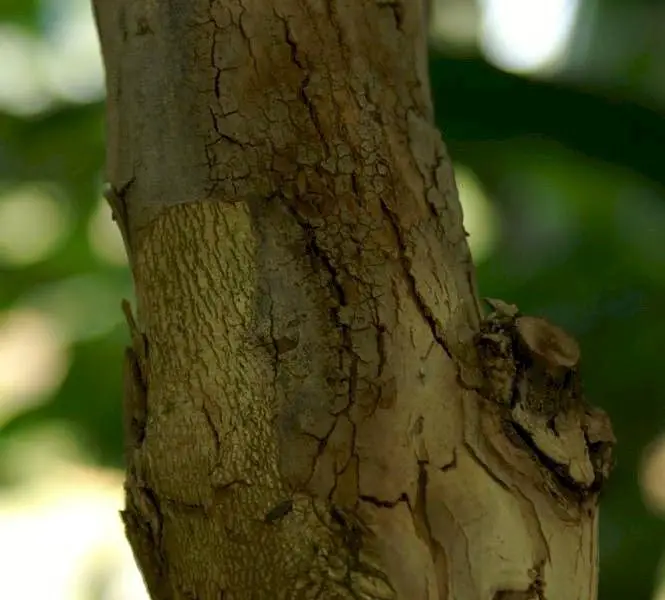
Silica is a naturally occurring mineral deposit frequently discovered in Brazilian Cherry. This deposit may be recognized on the surface of the wood by its milky tint.
Generally, the tree is located on the higher riverbanks, ridges, or slopes of Southern Mexico, Central America, the West Indies, and northern Brazil, Bolivia, and Peru. It can also be found in Peru.
The Brazilian Cherry tree has the potential to reach a height of 130 feet, and its trunk can contact a width of up to 6 feet at its widest point. The typical size of a tree is 100 feet, and its diameter ranges from 2 to 4 feet.
Properties of Brazillian Cherry:
- When it is freshly cut, the heartwood of Brazilian Cherry can have a color that is anywhere from pinkish-red to brown-orange. As the wood ages, its color changes to tan to reddish-brown.
- The Brazilian Cherry tree produces a highly photosensitive wood. The first three months after exposure to light will see the most significant amount of darkening.
Applications of Brazillian Cherry:
- Decking
- Plywood
- Furniture
- Flooring
- Railroad crossties
- Tree-nails
2. Mesquite (2345)
Compared to red oak, hickory, hard maple, and walnut, this type of wood is exceptionally consistent and tenacious. Its surface hardness of 2,336 pounds and wood density of 45 pounds per cubic foot is very high.
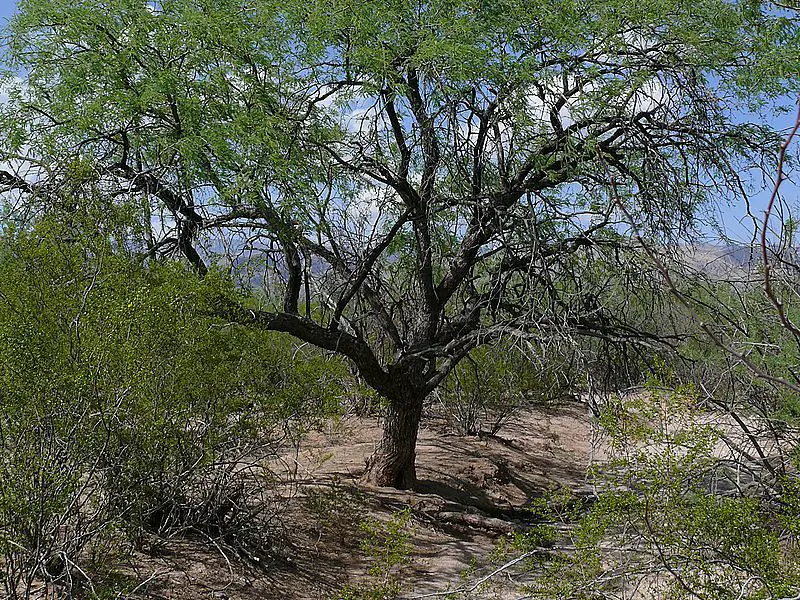
Its low volumetric shrinkage of 4.7%, which is just one-fourth that of most other woods, is arguably its finest quality and makes it stand out from the others. It is known by its scientific name, Prosopis glandulosa, and can be found in the southwestern part of North America.
The cost of mesquite, when compared to other domestic hardwoods, is relatively high.
Properties of Mesquite:
- Mesquite has a texture between medium and coarse, open pores, and a slight natural sheen.
- In terms of its resistance to decay, mesquite is considered an exceptionally durable material.
Applications of Mesquite:
- Fence posts
- Flooring
- turned objects
- Cabinetry
- Furniture.
3. Santos Mahogany (2200)
Santos Mahogany is one of the world’s most highly sought-after exotic hardwoods. The Santos Mahogany has a Janka grade of 2,200, making it 18% harder than Hickory, the toughest of the hardwoods found in North America.
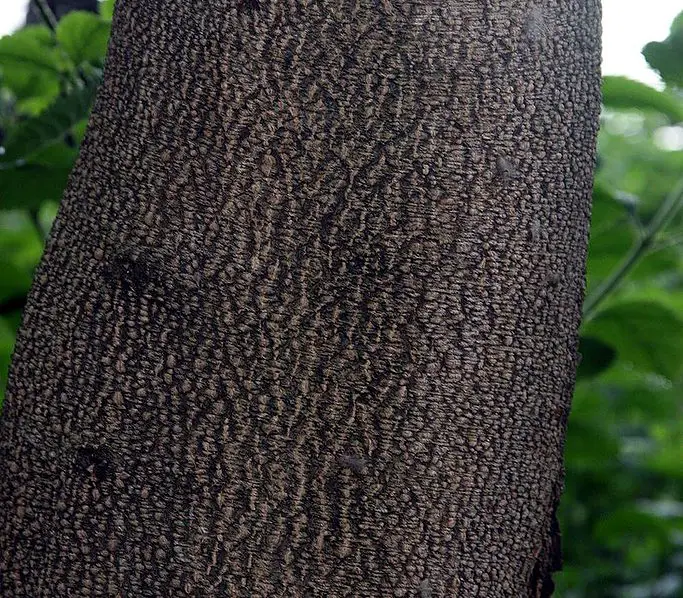
Santos Mahogany is hard to top in terms of its durability and stunning appearance. The Santos Mahogany tree has the potential to reach a height of 100 feet, yet the typical height range is between 50 and 67 feet. It can be found from the southern tip of Mexico down through Central America and into Argentina and has a diameter of between 18 and 36 inches.
Properties of Santos Mahogany:
- It is gorgeous reddish brown to deep red color stays the same over time, and the tight grain is an ideal companion to the rich shades with its fine, distinctive strokes. Both of these characteristics remain stable over time.
- It is rated as having a very high resistance to rot and fungal growth.
Applications of the Santos Mahogany:
- Flooring
- Furniture
- Railroad crossties
- Turnery
- Interior trim.
4. Merbau (1925)
Merbau wood is a well-liked hardwood widely distributed and growing as far afield as East Africa, Southeast Asia, and Northern Queensland. It is also known by the name Kwila.
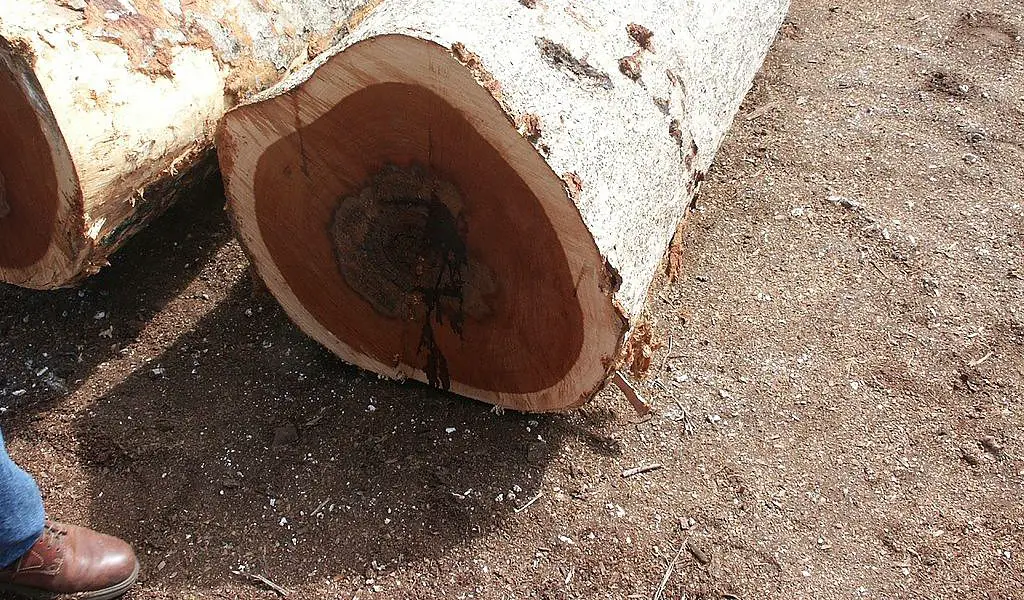
The tree can produce between 130 and 200 feet tall (40 and 60 meters), and its trunk can be between 1.2 and 1.5 meters in diameter.
Its distribution ranges from East Africa to Southeast Asia and Australia. When purchasing imported hardwood, prices should be reasonable.
Properties of Merbau:
- When first cut, the color is orange-brown, but it will darken to a dark reddish-brown with time.
- There are a few smaller yellow mineral deposits that are water-soluble and have a tendency to bleed.
Applications of Merbau:
- Flooring
- Furniture
- Musical instruments
- Turned objects
5. Jarrah (1910)
Jarrah is a type of timber that may be found across the southwest of Australia, and it is expected that pricing for local lumber would be reasonable.
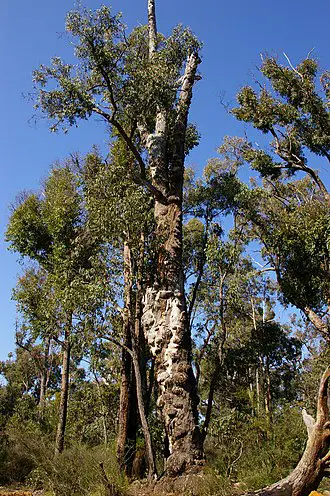
The cost of imported jarrah typically falls in the middle of the spectrum for the cost of exotic lumber. Pieces with a curly grain, sometimes known as burl block, are likely to be more valuable.
The tree’s height ranges from 30 to 40 meters, and its trunk diameter ranges from 1 to 1.5 meters.
Properties of Jarrah:
- It is pretty immune to the effects of bug bites.
- There have been reports that jarrah can irritate the eyes or the respiratory system.
Applications of Jarrah:
- Flooring
- Heavy Construction
- Veneer
- Cabinetry
- Outdoor furniture
- Turned objects.
6. Purpleheart (1860)
One of the hardwood species that is accessible, purpleheart is known for its exceptional durability and consistency. Purpleheart can be stained to look more reddish-brown and less purple-pink, even though its natural hue is remarkable.
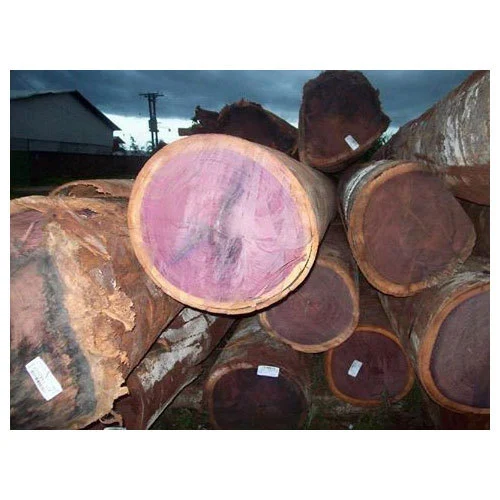
The texture ranges from fine to medium and can be found throughout South and Central America as well as Oceania and Southeast Asia. It has a Janka hardness of 1,860 pounds, which characterizes its characteristics.
Properties of Purpleheart:
- Dries at a leisurely speed, with a slight chance that the surface may check and the end will split.
- They are considered to be extremely long-lasting and resistant to termites.
Applications of Purpleheart:
- Flooring
- Decking
- Decorative veneers
- Bridge joists
7. Hickory/Pecan (1820)
Not only is hickory flooring naturally stunning in terms of aesthetics, but it is also the most durable of all the woods in North America. Hickory flooring is denser, more rigid, and more challenging to work with than either white oak or hard maple flooring.
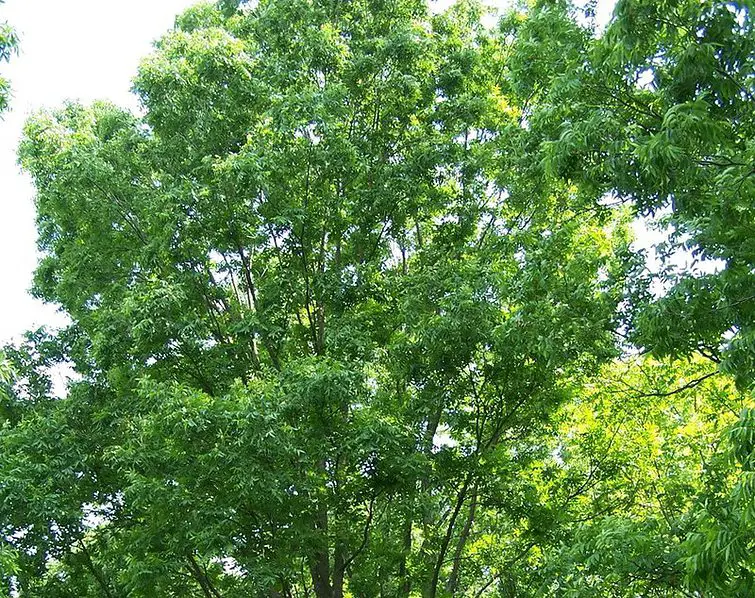
A tall tree may grow to a height of 160 feet and has an enormous trunk. It can exist for up to 350 years at a time. Hickory is a beautiful and functional flooring material that may be used in homes decorated in any architectural style.
Properties of Hickory/Pecan:
- The combination of the material’s strength and the striking color contrasts makes it challenging to work with.
- Tearout is a regular occurrence during the milling processes.
Applications of Hickory/Pecan:
- Tool handles
- Ladder rungs
- Wheel spokes
8. African Padauk (1725)
Padauk has a highly distinctive hue that can be described as being more reddish orange, and the name “Vermillion” is sometimes used to refer to the wood.
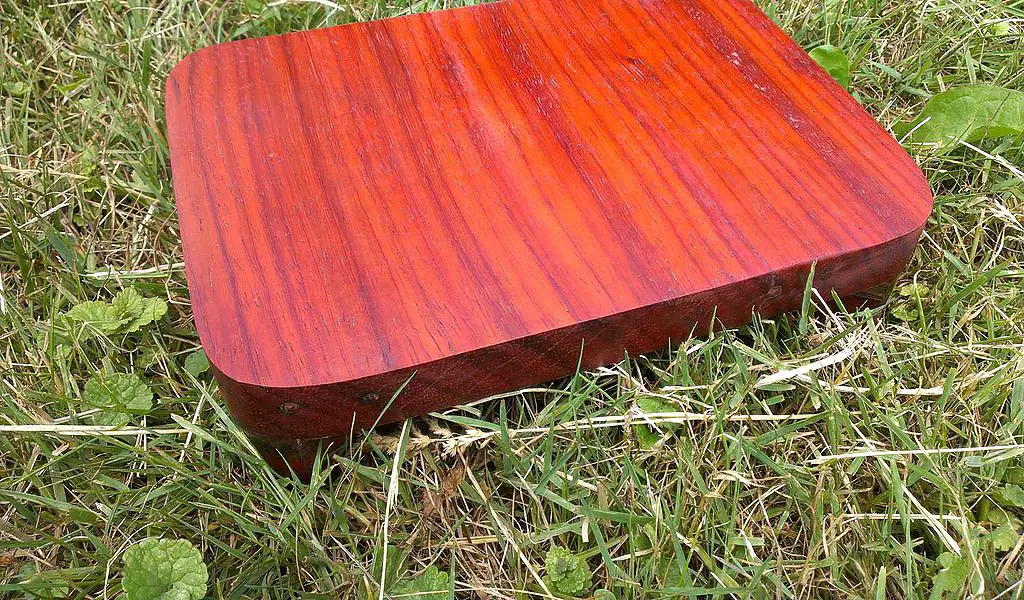
Padauk has outstanding stability in addition to its moderate heaviness, strength, and stiffness. Because of its one-of-a-kind appearance and affordable price, it is a favorite species of hardwood among those who engage in woodworking as a hobby.
The tree can grow between 30 and 40 meters in height and has a trunk diameter between 0.6 and 1.2 meters. Its range of distribution includes tropical and central west Africa. It should be reasonably priced, considering it is an import.
Properties of African Padauk:
- While being worked, Padauk emits a pleasant aroma that is very subtle.
- Reports have shown that Padauk can sensitize people, even though severe reactions are rare.
Applications of African Padauk:
- Musical instruments
- Specialty wood objects.
9. Wenge (1630)
The wood used to make wenge furniture comes from one of two tree species native to Central Africa. The tree is considered endangered, and as a result, its timber is tough to acquire; due to these factors, the wood is costly.
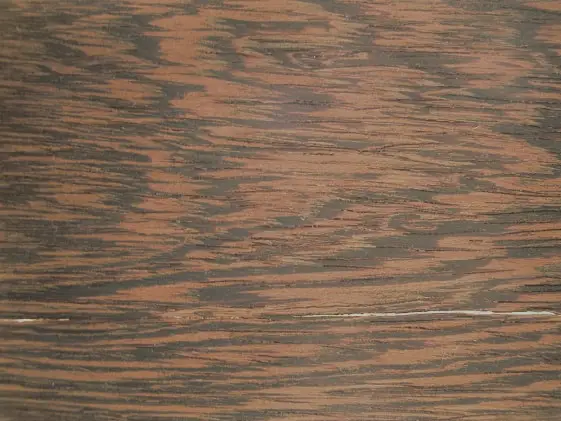
The Millettia laurentii tree, native to Central Africa, can attain a height of nearly 30 meters and have a trunk diameter of approximately 1 meter. This tree produces wood that is used in construction. The wood has an extremely high density. It indicates that it is resistant to moisture because the pores are so tiny that it is difficult for them to take in any water.
Properties of Wenge:
- It is resistant to termites, and because it contains natural oils, it does not require any treatment.
- In addition to being sturdy and wear-resistant, it is also resistant to termites.
Applications of Wenge:
- Wood paneling
- Parquetry
- Cabinet making
10. Hard Maple (1450)
The sugar maple, which more commonly refers to the hard maple, is the maple tree species most widely used to produce maple syrup.
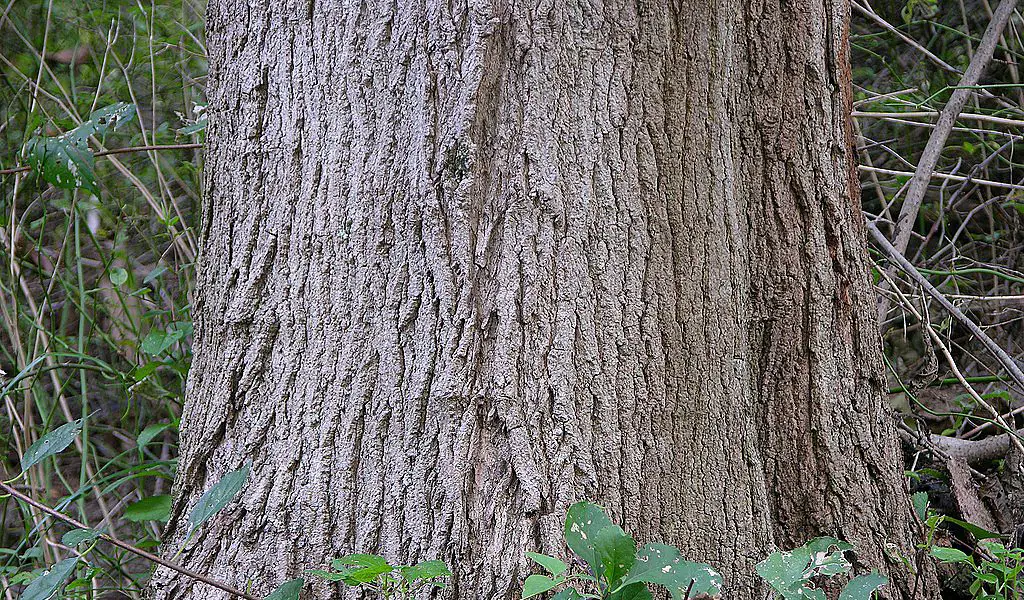
The tree can reach heights of up to 115 feet (25 meters) and has a trunk diameter of between 2 and 3 feet (0.6 and 1.0 meters). It is native to the northeastern region of North America. It should be priced moderately, but figured pieces like birdseye, curl, or quilt are likely significantly more expensive than the rest of the parts.
The tree is referred to by its scientific name, Acer saccharum.
Properties of Hard Maple:
- Irritate the skin, make the nose run, and trigger asthma-like symptoms in the respiratory system.
- Described as non-durable to perishable and open to the possibility of insect infestation.
Applications of Hard Maple:
- The flooring of the basketball court and dance floor
- Pulpwood
- Musical instruments
- Cutting boards
- Butcher blocks
- Workbenches
11. Australian Cypress (1375)
The White Cypress Pine is not a true pine (Pinus genus), even though it is a member of the more prominent Cupressaceae family, which includes several genera that fall under the umbrella term “cypress.”

Despite this, the tree is sometimes referred to by the misleading name White Cypress Pine. The tree size can range from 65 to 100 feet (20 to 30 meters) in height, with a trunk diameter of 1.5 to 2 feet (.5 to.6 meters) and a Janka hardness of 1,360 pounds force.
Properties of Australian Cypress:
- It has been reported that Australian Cypress can irritate the skin, in addition to causing other, less common side effects such as boils, swelling of the eyelids, and symptoms similar to asthma.
- In general, it is simple to manipulate, but frequently occurring tiny knots can occasionally result in tear-out or other machining difficulties.
Applications of Australian Cypress:
- Plywood
- Light construction purposes
12. White Oak (1360)
The White Oak, also known by its scientific name Quercus alba, is a tree native to the eastern region of the United States. The tree can grow between 65 and 85 feet (20-25 meters) tall, with a trunk diameter of between 1 and 1.2 meters.
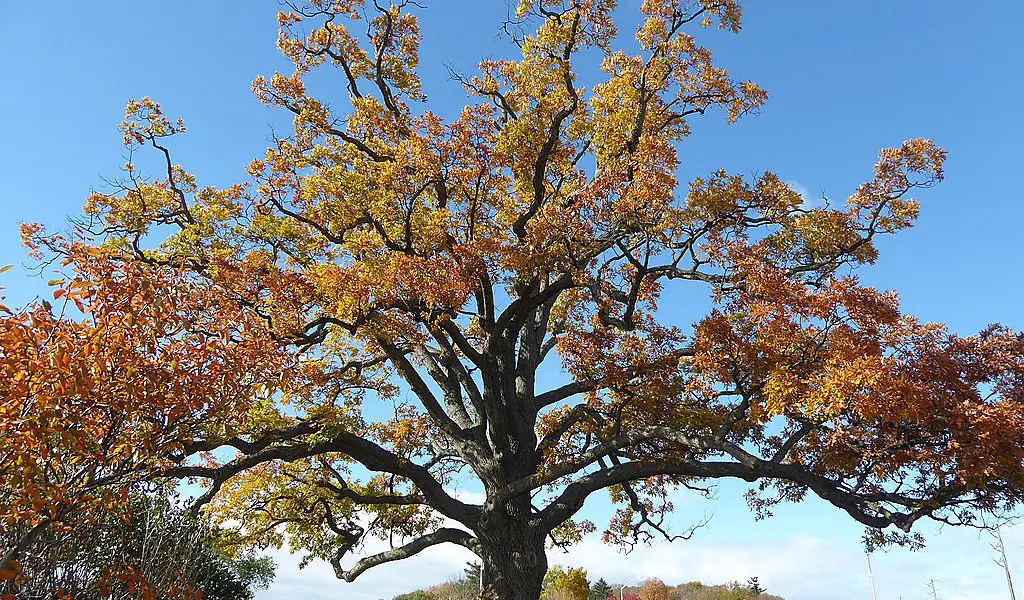
White oak provides outstanding value to woodworkers because of its strength, beauty, resistance to rot, ease of working, and low cost. Compared to foreign hardwoods, the pricing for domestic hardwoods is very affordable; nevertheless, the price of thicker planks or quartersawn boards is higher.
Properties of White Oak:
- During the working process, it emits a smell that is distinctive and characteristic of oaks in general.
- Has shrinkage values are somewhat high, resulting in an average level of dimensional stability, particularly in flatsawn boards.
Applications of White Oak:
- Cabinet
- Interior trim
- Boat building
13. Ash (1320)
The ash wood color is typically light, and its strength and durability are reflected in its more excellent hardness value of 1,320 lbf. It has a reasonably straight grain despite its gritty texture.
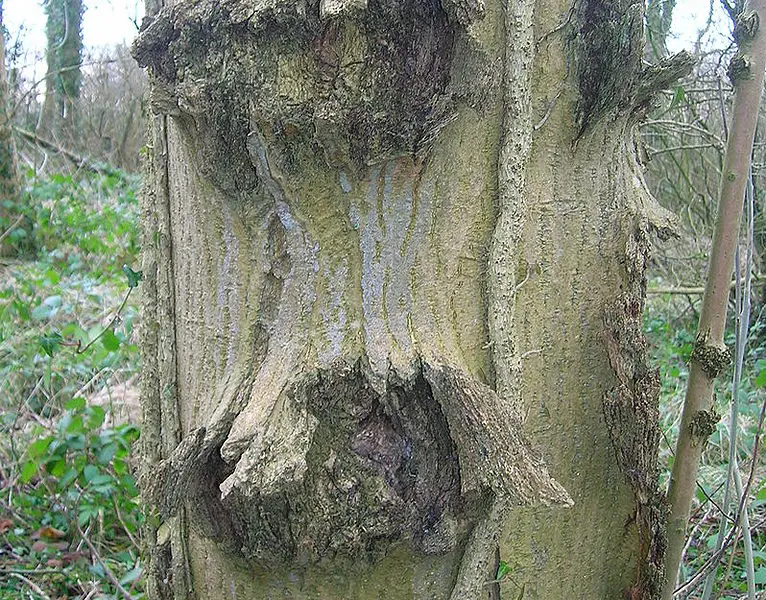
The scientific name for this type of wood is Fraxinus Americana, which may be found throughout the eastern part of North America.
The tree size can range from 65 to 100 feet (20 to 30 meters) in height, with a trunk diameter of.6 to 1.5 meters. Ashwood is known for its strength, durability, and often pale appearance. It has a reasonably straight grain despite its gritty texture.
Properties of Ash wood:
- Ashwood’s cellular structures are known for being extremely hard and dense, making it a durable and low-maintenance material.
- It has a perishable decay rating, indicating that its durability is only slightly above average. The ash tree is equally susceptible to pest infestation.
Applications of Ash Wood:
- Tools
- Frames
- Furniture
14. American Beech (1300)
The American Beech, also known by its scientific name, Fagus grandifolia, is a tree native to the eastern part of the United States.
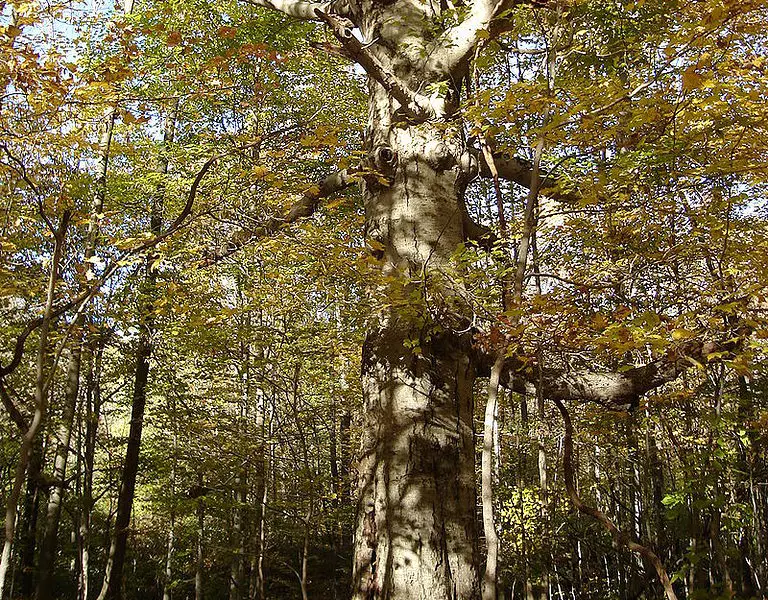
Tree Size can range from 100 to 130 feet (30 to 40 meters) tall, with a trunk diameter of between 1 and 1.5 meters.
Beech is a fantastic value for woodworkers because of its decent strength and hardness and relatively affordable price. Beech is abundantly accessible and inexpensive within its native range in the United States.
Properties of American Beech wood:
- It is thought that beech is either non-durable or perishable and is also vulnerable to pest infestation.
- The steam-bending technique works exceptionally well with beech as well.
Applications of American Beech Wood:
- Railroad ties
- Musical instruments
- Crates/pallets
15. Red Oak Northern (1290)
The subtle yet resonant contrast created by the reddish-brown heartwood and the white tones of red oak makes this type of wood so delightful in its own right.
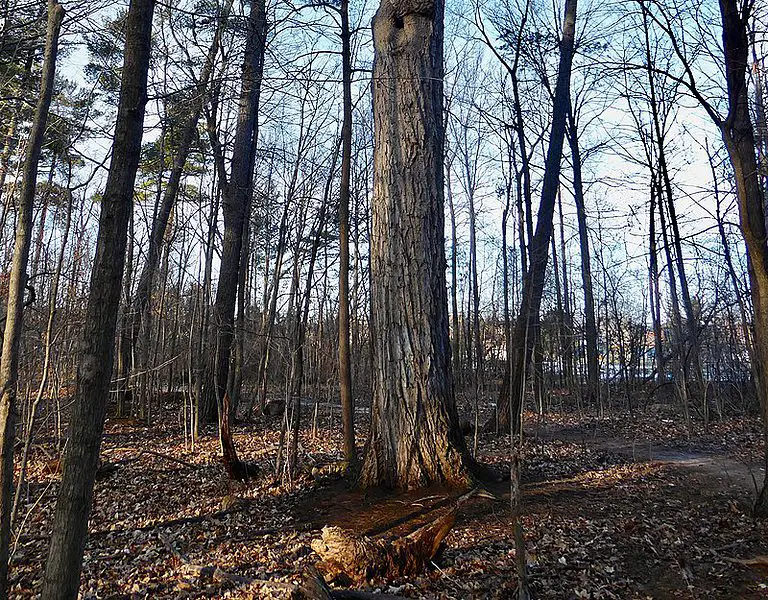
Red Oaks can grow to 125 feet and have a rather large diameter. These trees can be found in Austria, Canada, the Czech Republic, France, Germany, Iran, Slovakia, the United Kingdom, and the United States.
Properties of Red Oak Northern wood:
- Considered to have a moderate resistance to rot in the heartwood.
- The elegance of the wood’s presentation is enhanced when the grain is uniform throughout.
Applications of Red Oak Northern Wood:
- Ships
- Mining timber
- Casket
- Boxes
16. Yellow Birch (1260)
Birch is one of the woods that is utilized the most in veneer and plywood production on a global scale. The yellow birch, also known as Betula alleghaniensis according to its scientific classification, is native to the northeastern region of North America.
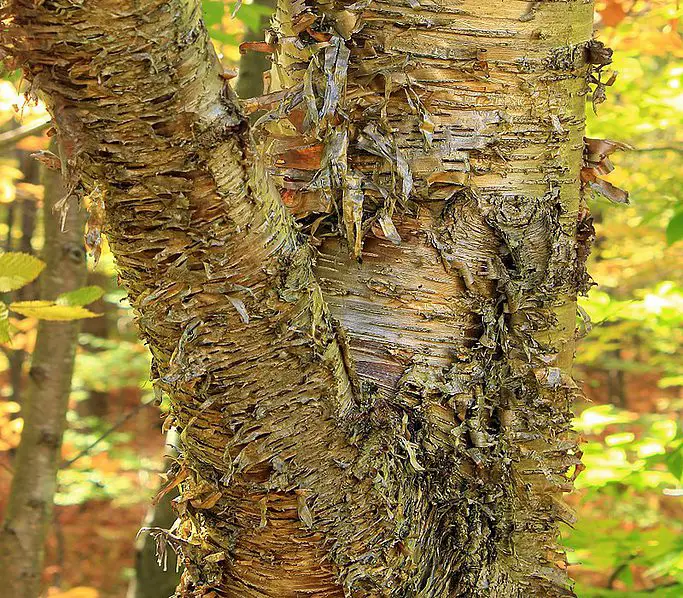
The diameter of the tree’s trunk ranges from 0.6 to 1.0 meters across, and its height can reach up to 100 feet. Birch is a perishable wood that quickly rots and decomposes when left out in the elements for too long. Additionally, the wood is vulnerable to infestation by insects.
Properties of Yellow Birch wood:
- There have been reports that birch, which belongs to the Betula genus, can sensitize. In most cases, the most common reactions consist solely of irritation to the skin and the respiratory system.
- It is generally simple to work with both hand and machine tools, although boards with wild grain may result in grain tear out when machined.
Applications of Yellow Birch Wood:
- Door
- Furniture
- Paneling
17. Heart Pine (1225)
Heart pine is called “heart pine” because it contains a substantial core made of heartwood. Heart pine has a Janka grade of 1225, which puts it in the same league as northern red oak regarding its abrasion resistance.

The trees, which can reach heights of up to 120 feet, take between 100 and 150 years to reach their maximum size but have a lifespan of up to 500 years. Thirty years of growth are required for just one inch of heart pine.
Properties of Heart Pine:
- The Heart Pine is distinct from other types of pines due to the dense growth ring pattern that it possesses as well as its one-of-a-kind reddish-amber color.
- As time passes, the light yellow color of lumber freshly sawn from antique heart pine logs will transform into a dark orange-red brown color. The color change is pronounced in longleaf heart pine, which has a high resin content.
Applications of Heart Pine:
- Flooring
- Fine furniture
18. Black Walnut (1010)
The Black Walnut, also known by its scientific name Juglans nigra, is a tree that may be found across the Eastern United States.
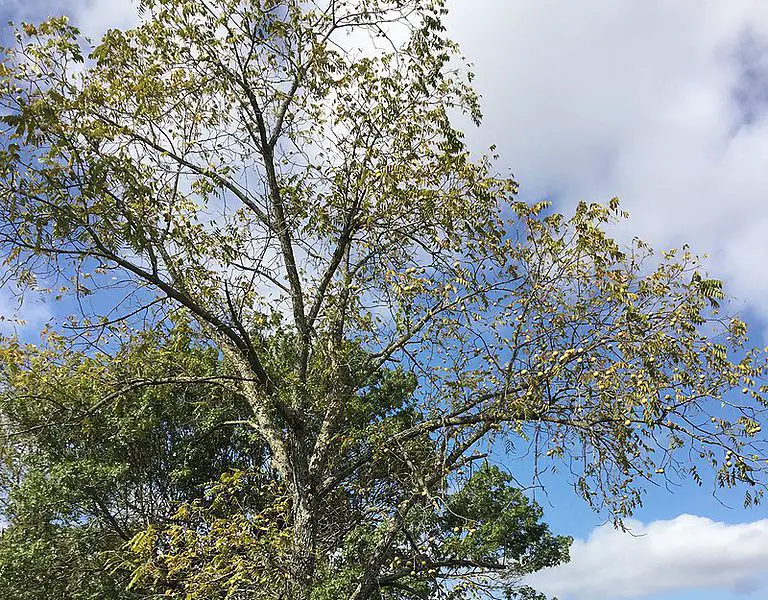
The diameter of the tree’s trunk ranges from 0.6 to 1 meter across, while its height ranges from 30 to 37 meters.
It would be difficult to overestimate the popularity of black walnut among those who work in woodworking in the United States. The wood is in a class by itself when it comes to hardwoods that grow in the temperate zone due to its cooperative working capabilities and rich brown hue.
Properties of Black Walnut:
- Although it is vulnerable to pest infestation, black walnut is considered to have a high level of durability in terms of its resistance to decay.
- In addition, the wood has excellent features in terms of dimensional stability, stress resistance, and strength.
Applications of Black Walnut:
- Gunstocks
- Interior paneling
- Cabinetry
19. Teak (1000)
One of the world’s most well-known and highly valued premium hardwood species is teak. It is a species of tropical hardwood member of the Lamiaceae family.
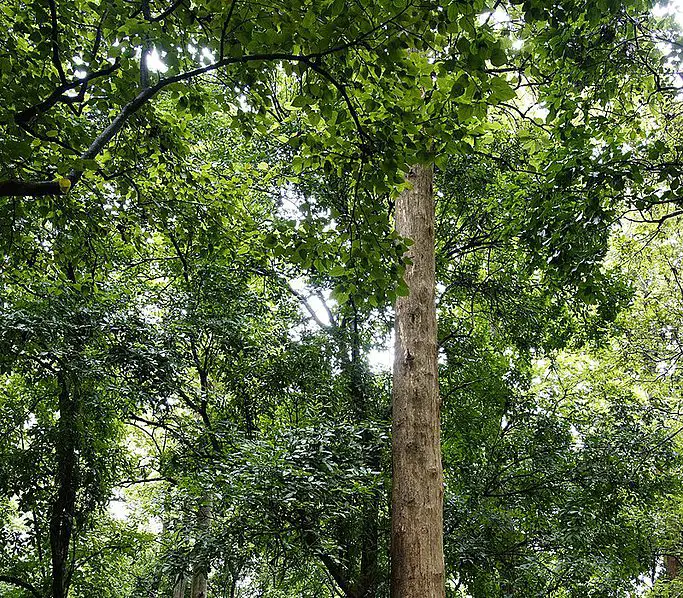
Teak trees, also known by their scientific name Tectona grandis, can grow naturally in the tropical regions of Africa, Asia, and Latin America.
Teak is notoriously costly due to its limited availability and protracted growing period (it takes approximately 20 years for the tree to reach its full maturity). The trees have the potential to reach a height of forty meters and have a trunk diameter of one to one and a half meters on average.
Properties of Teak wood:
- Almost unparalleled in its capacity to withstand the ravages of time, the elements, insects, and decay.
- Teak leaves are also consumed by the larvae of various species of moths as a source of food.
Applications of the Teak Wood:
- Paneling
- Carving
- Decking
20. Black Cherry (950)
The Black Cherry, also known as Prunus serotina according to its scientific classification, is native to eastern regions of North America. 50–100 feet (15–30 meters) in height, with a trunk diameter between 3 and 5 feet (0.3–0.6 meters).

Prices for black cherry are typically in the middle to the upper range compared to other domestic hardwoods due to its status as a prime American cabinet hardwood. As it matures, black cherry acquires a deep, reddish-brown patina that is frequently replicated with various wood stains.
Properties of Black Cherry:
- During processing, it emits a pleasant odor that is easily recognizable.
- Inhaling the sawdust from black cherries has been linked to adverse effects on the respiratory system, such as wheezing.
Applications of Black Cherry:
- Cabinetry
- Interior millwork
- Small specialty wood items
- Fine furniture
Frequently Asked Questions
Wrapping Up
There are a significant number of hardwoods found across the globe.
Oak wood is the strongest when manufacturing wooden boats, but walnut wood is one of the strongest and best woods to use when constructing cutting boards or bookshelves. Walnut wood is also one of the most incredible woods to use when making furniture.
Ultimately, it is up to you and only you to conduct the necessary study and select the type of wood most appropriate for your project.
The ability of a piece of wood to withstand the pressure exerted by an outside force that is more powerful than it and threatens to distort its surface is referred to as its hardness.
Janka is a beautiful choice if you are interested in the strength of wood for use as a flooring material. The Janka strength test is typically the method of choice for experts when conducting evaluations of the tensile strength of wood. Because, as you are most likely aware, the power of the wood is one of the most crucial aspects to consider when selecting and utilizing the wood.
